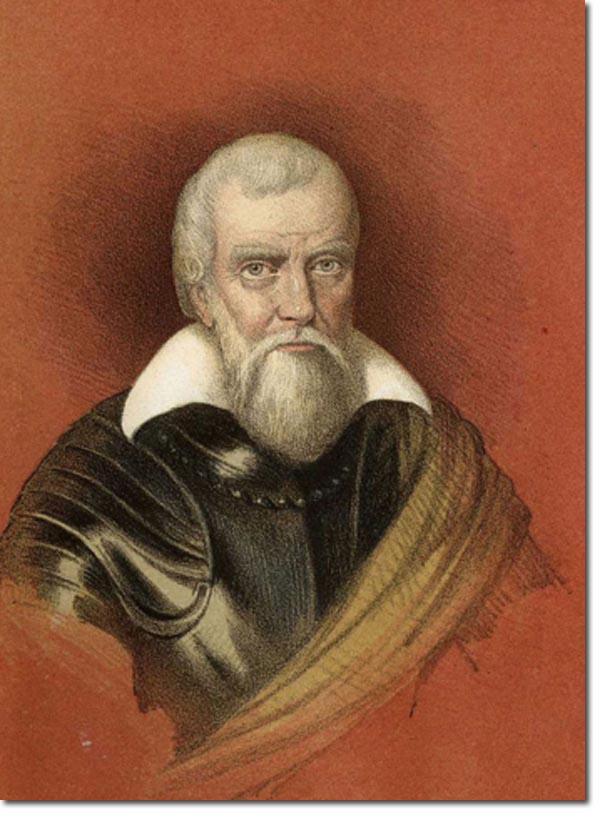|
|

 |
|
Hugh O'Neill is another one of those complicated characters. His background offered little evidence of the route that his later life would take. Hugh O'Neill was the illegitimate son of a powerful Irish family. Hugh O'Neill was actually brought up in England and spent the formative years of his life as a highly loyal subject to Elizabeth. He did not move to Ireland until 1568 where he served Elizabeth in the Desmond rebellions to the south of Ireland. He also assisted in the early colonisation attempts in County Antrim. For his apparent loyalty, Elizabeth was happy to grant him the earlship of Tyrone which had been a notoriously disloyal part of Ireland.
In the early 1590s, English government in Ulster took the form of a Provincial Presidency, headed by Henry Bagenal who lived at Newry. In 1591, O'Neill roused the ire of Bagenal by eloping with his sister, Mabel, but showed his loyalty to the crown with his military support for his brother-in-law in the defeat of Hugh Maguire at Belleek in 1593. After Mabel's death, O'Neill gradually fell into a barely concealed opposition to the crown and sought aid from Spain and Scotland. In 1595, Sir John Norris was ordered to Ireland at the head of a considerable force for the purpose of subduing him, but O'Neill succeeded in taking the Blackwater Fort before Norris could prepare his forces. O'Neill was instantly proclaimed a traitor at Dundalk. The war that followed is known as the Nine Years War. Hugh O'Neill's greatest victory came in 1598 when he again met Bagenal this time at Yellow Ford on the river Blackwater, County Armagh, Bagenal was killed and his army defeated. This battle marked a low point in Elizabeth's attempts to subjagate and control Ireland. it also encourged the Spanish to become involved in a revolt that was rapidly spinning out of control. In 1601 three thousand Spanish troops landed at Kinsale in County Cork, where they were immediately surrounded by the ruthlessly efficient English commander, Mountjoy. O'Neill marched his army to Cork where it was totally routed. He retreated to Ulster where he eventually surrendered on March 30 1603. In 1607 Hugh O'Neill and ninety other Irish Gaelic chiefs sailed in exile from Rathmullen on Lough Swilly in County Donegal for Europe, this event came to be known as 'The Flight of the Earls'. Hugh died in Rome on the 20th July 1616. |
Ireland | Significant Individuals
Armed Forces | Art and Culture | Articles | Biographies | Colonies | Discussion | Glossary | Home | Library | Links | Map Room | Sources and Media | Science and Technology | Search | Student Zone | Timelines | TV & Film | Wargames
